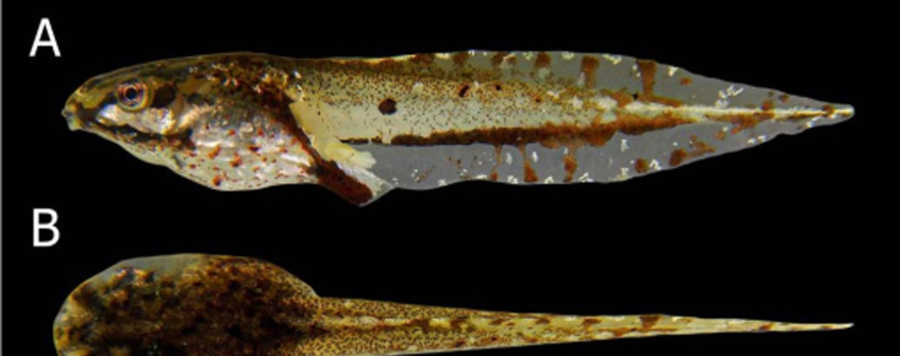
Redescription of the Tadpoles of Gabohyla pauloalvini (Bokermann, 1973) and Sphaenorhynchus prasinus (Bokermann, 1973) (Hylidae: Sphaenorhynchini)
The Neotropical tribe Sphaenorhynchini includes 15 recognized species, 14 of which are allocated to the genus Sphaenorhynchus and 1 in the genus Gabohyla. Here, we redescribe the external larval morphology and include novel information on the lateral line system of G. pauloalvini and S. prasinus from the type localities. In addition, we include comments on the oviposition site and larval development of G. pauloalvini. The tadpoles of G. pauloalvini differentiate from all described larvae of Sphaenorhynchus by having a unique combination of stripes in the coloration: three lateral dark stripes (canthal, oblique, and ventrolateral) on the body and a single ventral dark stripe on the tail. The tadpoles of S. prasinus distinguish from those of G. pauloalvini and from all other larvae of Sphaenorhynchus by having a single, median, dark stripe on the tail musculature, among other characters. Tadpoles of G. pauloalvini and S. prasinus are nektonic and found swimming in the middle of the water column or in deeper regions of ponds. Adults of G. pauloalvini were observed sitting next to spawns, reinforcing the possibility of parental care in this species.






